This is one of my favorite times of year to hike in Los Angeles. Now hear me out: I promise there are completely logical reasons to hike in the heat of July and August.
For starters, animal life is flourishing — especially this year. In May, I chatted with Kenia Estrella, recreation service leader at Eaton Canyon Nature Center, about just how much our local animals are appreciating all the rain we got this past spring. The tadpoles in my local stream are living their best life, wiggling their way to future homes in the fresh spring water as they prepare to transition to the next phase. (I couldn’t tell if they were western tree frogs or toads, but I look forward to visiting in a couple weeks to see.) And Estrella was right — I’ve never seen so many birds out there, especially hummingbirds. The trails are ablaze with life, from water-skimmers to dragonflies.

Thanks to the spring rains, plenty of flowers are still in bloom.
(Allen J. Schaben / Los Angeles Times)
Love flowers? Maybe it’s all the water, but the heat hasn’t obliterated the bloom yet, so you can still find plenty of gorgeous flowers along L.A. hiking trails. Yesterday, I hiked the Gabrielino Trail, where my buddy and I were treated to the flamboyant blooms of the sacred datura, a.k.a. jimsonweed. As we crossed into the part of the trail that enters the Angeles National Forest, the plucky yellow faces of sticky monkeyflowers popped up to say hello. (Unfortunately, poison oak is also abundant, but we were able to easily avoid it by staying on the trail.)
Newsletter
Get The Wild newsletter.
The essential weekly guide to enjoying the outdoors in Southern California. Insider tips on the best of our beaches, trails, parks, deserts, forests and mountains.
You may occasionally receive promotional content from the Los Angeles Times.
Another plus is that trails are far less crowded. We started our hike around 8:30 a.m. with lots of fellow hikers and finished around 12:30 p.m., when few were on the trail. Personally, I’d rather hike any day than hit the beach, even when temperatures in my San Gabriel Valley city hit 100 degrees. I make sure to head out early enough so that I’m finished by the hottest part of the day, and I pick trails that are at least partially shaded.
Everyone handles heat differently, and, even though I lived in Arizona for years, I know I’m still vulnerable. If you remember the sad story of the family that died likely of hyperthermia and dehydration in Yosemite National Park or the ultramarathoner who died of heat exhaustion, you know it can be hard to estimate the risks of hot hiking, even if you’re experienced.
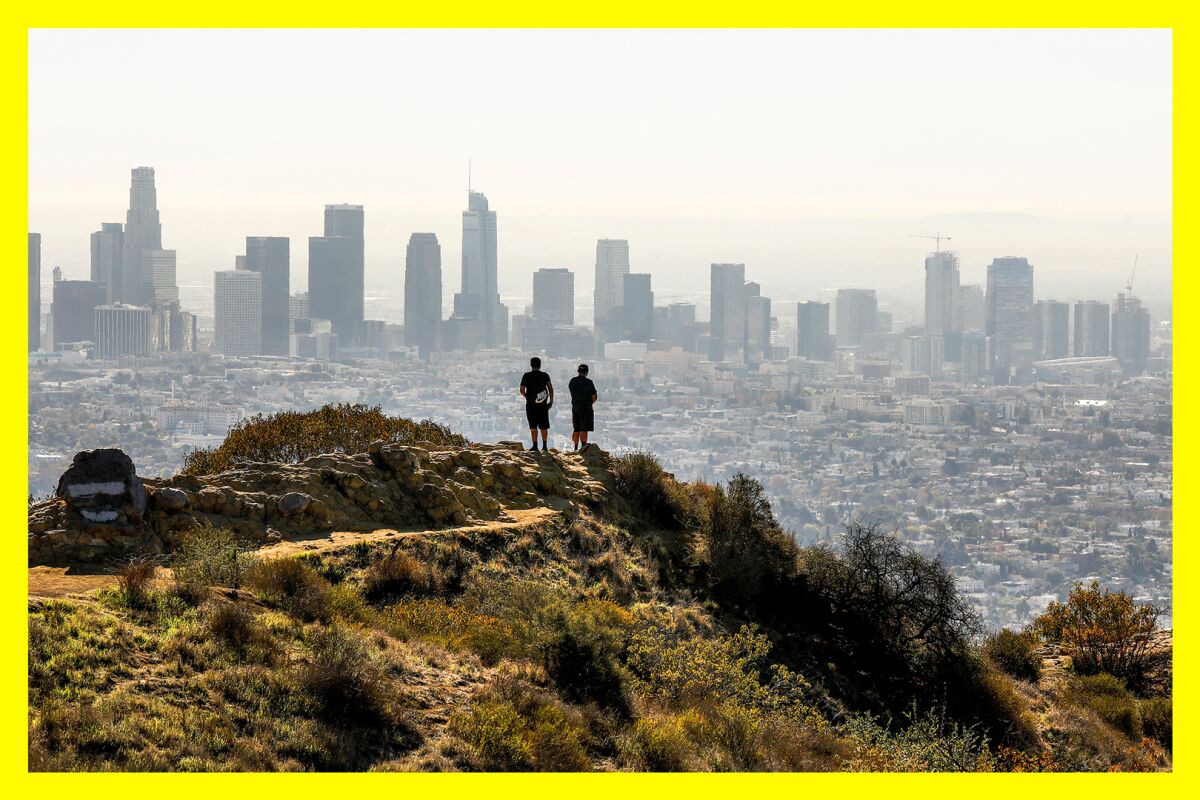
You’ll find less-crowded trails. But keep an eye out for shade.
(Al Seib / Los Angeles Times)
If you choose to hike at this time of the year — and I find it nearly irresistible to do so — these are my personal tips to help mitigate the risks. (For more suggestions, including skin care tips and gear to grab, read my dispatch on prepping for “hot hiker summer.”)
Go early. Hit the trails before or near sunrise if you feel safe doing so. Right now, that’s around 6 a.m. Check the forecast for the time you’ll finish, overestimating the amount of time you think it will take to complete a trail. You might think you’ll be done by 11 a.m., but it could be noon or 1 p.m. by the time you enter the hottest, unshaded part of your hike.
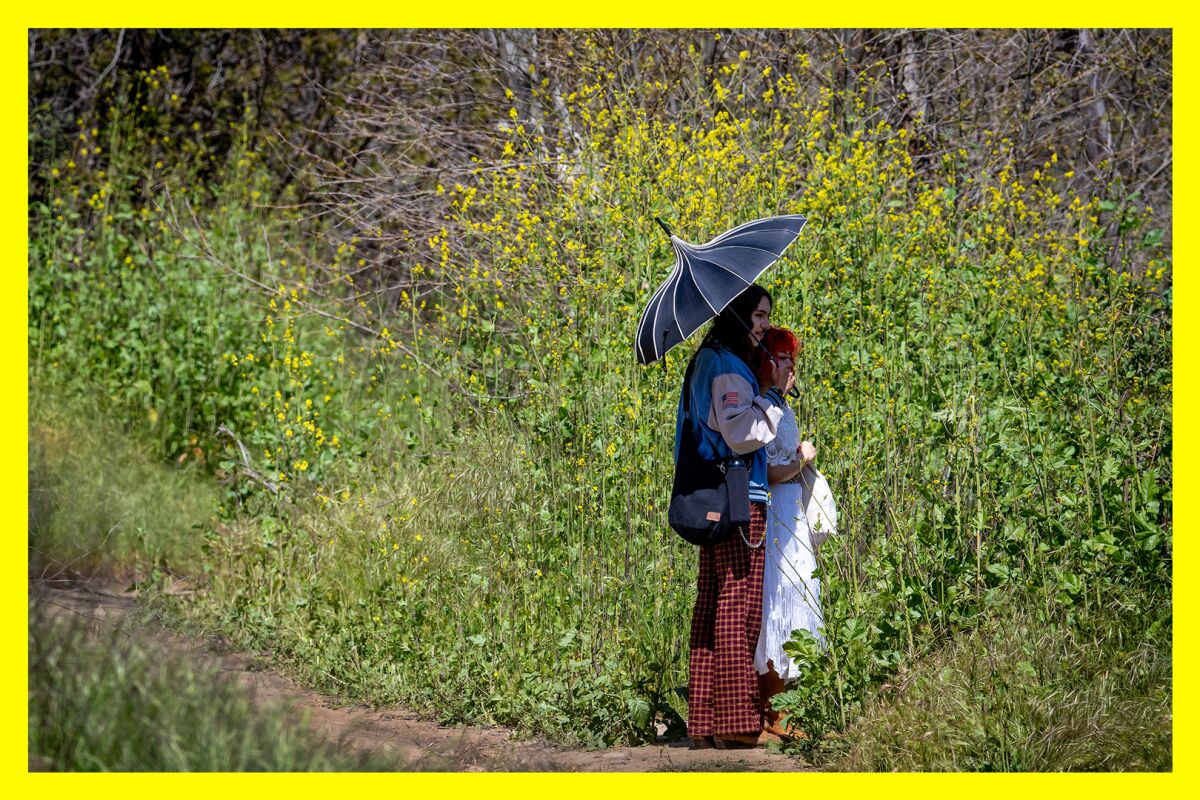
Sun protection is a must-have.
(Allen J. Schaben / Los Angeles Times)
If you feel hot, quit early. Even the best-laid schemes, as Robert Burns said … well, they go awry. If you planned to make it to the summit, but the heat is cranking up to an intolerable level, or you’ve consumed your water faster than expected, turn around and head back to the trailhead. Forgo your ego and confess to your friend or yourself that you feel too tired and hot to continue — there’s always another day, and another way.
Pick a shaded trail. Do your AllTrails and book research to find shaded trails; they’ll make your hike feel cooler than it actually is. Foliage may have changed since a guidebook was written, so I always look at the most recent AllTrails reviews left by hikers during the same season to see if they mention hot sun or shade. Areas with oak woodlands, which allow for ample shade, are especially inviting during this weather.
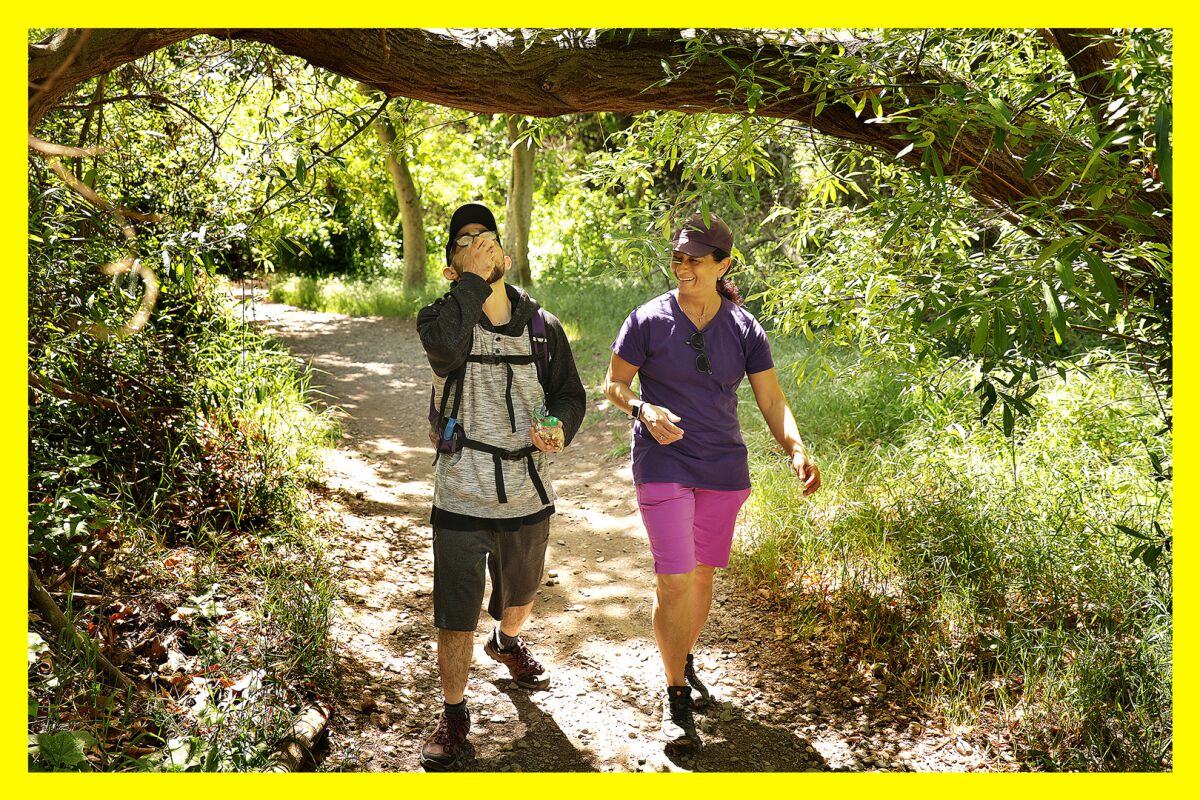
Hike with a buddy for fun and safety.
(Christina House / Los Angeles Times)
Pack more water than you think you need. Though experts recommend bringing a half-liter of water per hour you plan to hike, a full liter is better in this weather. Invest in a water bladder, not just for trail runs but for regular hikes. If there are streams in the area where you’re going, consider bringing an extra water filter, like the LifeStraw or Grayl UltraPress purifier. (I hook them onto a pack with my carabiner.)
Stock up on electrolytes. Drinking too much water without enough electrolytes can actually cause exercise-associated hyponatremia, which happens when you don’t have enough salt in your system and get water intoxication. On my most recent hike, I brought salty snacks like vegan jerky, trail mix, granola bars and packets of Justin’s almond butter. I also stock up on electrolytes not just during a hike, but also on the way to the trail by drinking coconut water or dropping a packet of Gnarly electrolyte powder into my cold cup while I drive.
Cool down on a hike with a waterfall or streams. Speaking of water, if you can find a trail that has something in the form of streams or waterfalls, that’s a great hot-weather hiking spot for you, your kids and your pup. (Always bring extra water for dogs, and if it’s really hot, consider leaving them at home, as they are more susceptible to overheating.) Taking a dip is a refreshing reward after hiking, so get wet — and soak a bandanna to tie around your hot neck for the hike back.
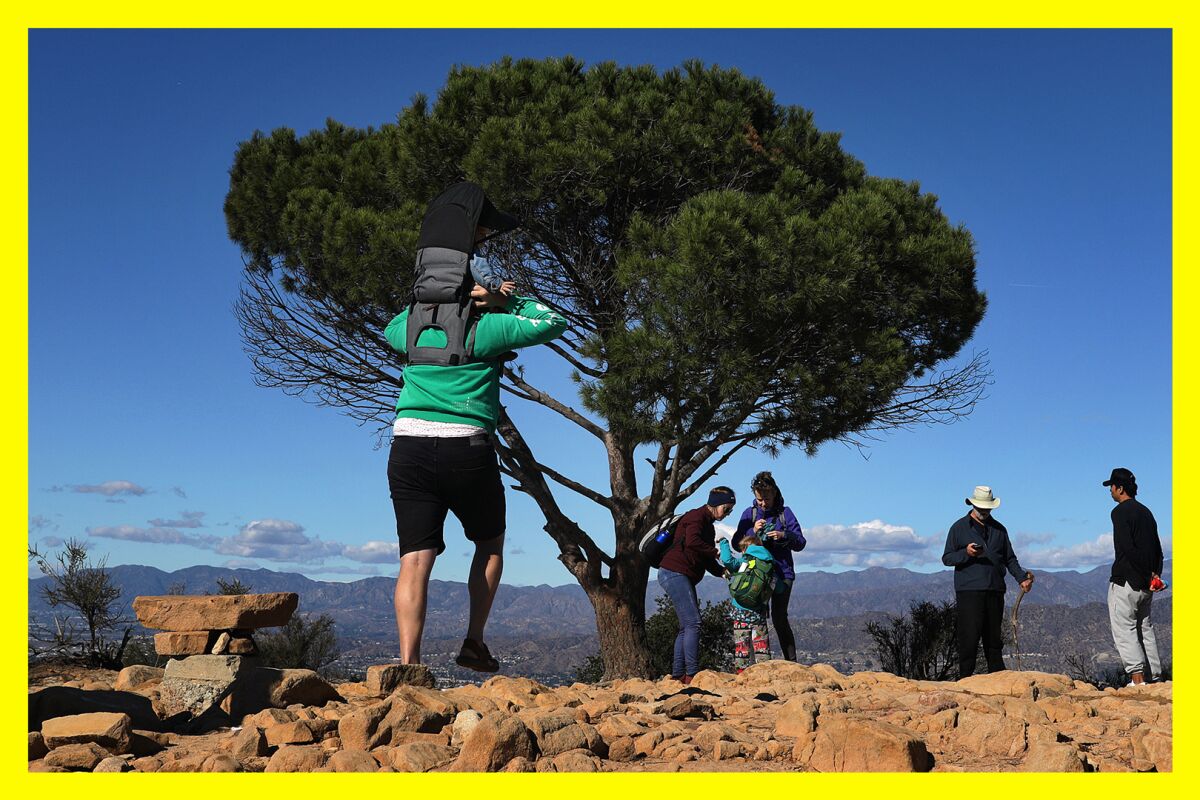
Pay attention to where you are, and know what to do if you get lost.
(Christina House / Los Angeles Times)
Use the buddy system, and let folks know your plans. It’s best to hike with a buddy, but when you are hiking solo, tell someone where you’re going. Send a text, leave a note at home and in your car, post a social media message and sign a trail hiking register. If you change your plans and take a different path unexpectedly mid-route, try to alert someone via text or social media. If you encounter an emergency or heat exhaustion, they’ll know where to send a search party.
Know what to do if you’re lost. We have a few tips for what to do if you get lost: Learning navigation basics can help you “stay found.” In the heat, you may feel disoriented on your hike. Make sure to rest in the shade, eat and drink water and electrolytes, and call for help if necessary. Mary Forgione has more tips on recognizing heat exhaustion.
If hiking in hot weather poses risks you’d rather not — or can’t — take, hit the climbing gym, the treadmill or maybe some aerial yoga or trapeze classes. The outdoors will be waiting for you come fall.
3 things to do
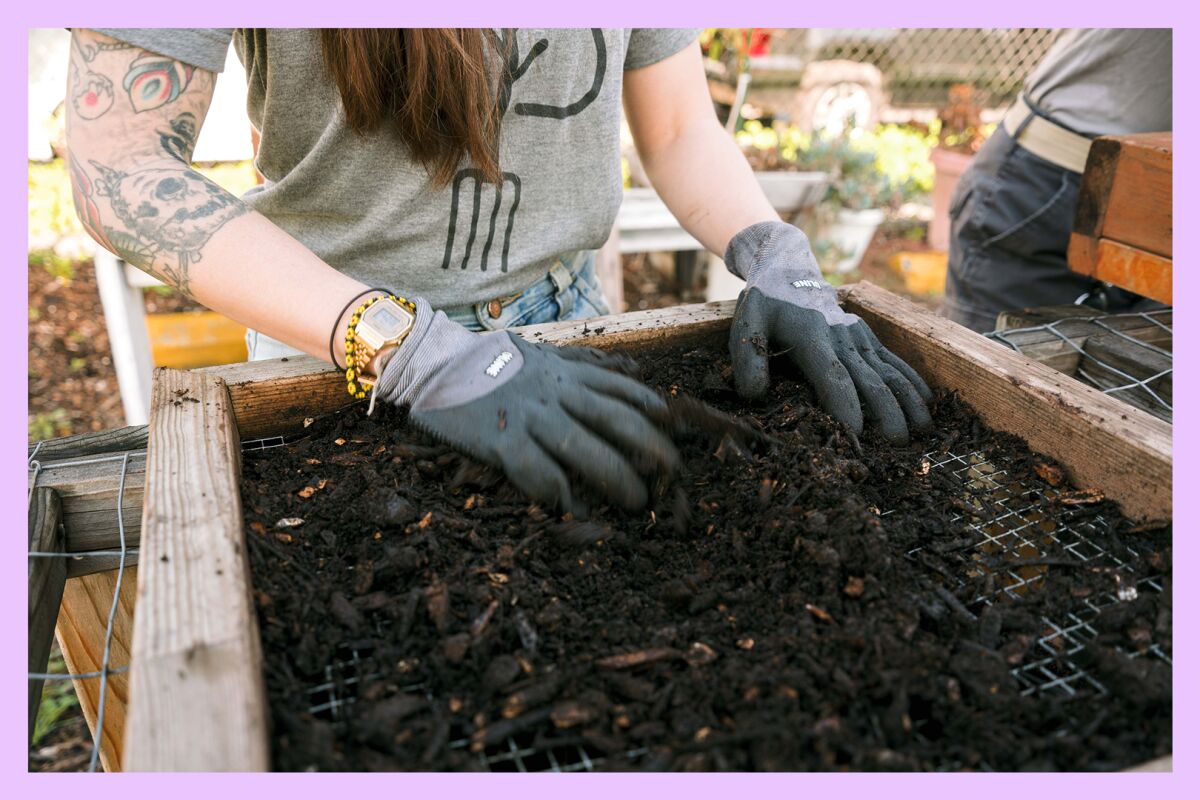
Learn how to sift compost, and why it matters, with LA Compost’s Compost Distribution event.
(LA Compost)
1. Dig deep to make rich soil. LA Compost makes regenerative earth activities so much fun, with garden hangs and great people. Their upcoming Compost Distribution on July 29 from 10 a.m. to noon will not only teach composting techniques, but also the larger picture of how compost benefits the larger environment. Called “Soil for All: Compost Distribution,” you’ll get to dig your shovel deep in the compost at Grow Good Urban Farm and help sift it. Why bother? Sifting is vital to breaking down organic waste, like your veggie scraps, into the best soil for gardening. Bring your own container to take home compost, and register here for the free event.
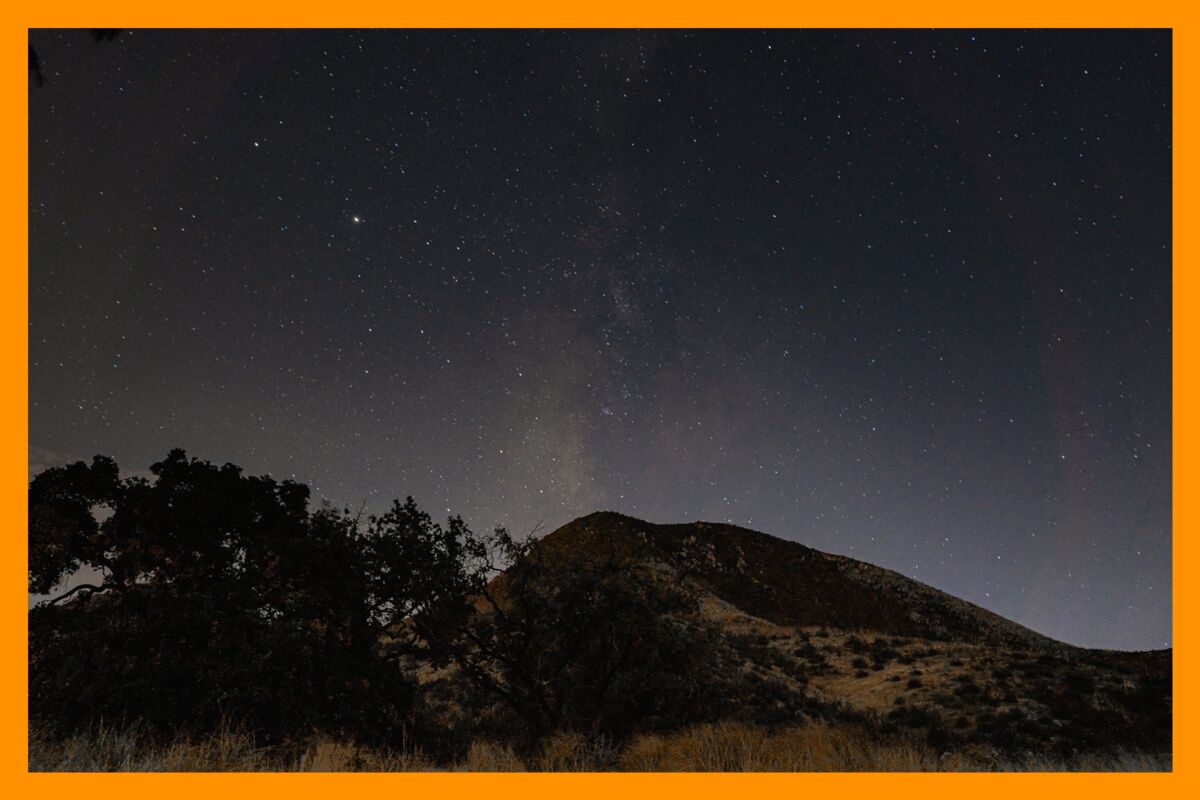
The Santa Monica National Recreation Area Park After Dark Festival offers fun and learning for all ages.
(Courtesy of National Park Service)
2. See the stars from the Santa Monica Mountains. Hang up your hat at Strauss Ranch, the coolest watering hole in the range, and join the Santa Monica National Recreation Area Park After Dark Festival. In the 1950s, Willie Nelson and Johnny Cash played concerts on the Italian terrazzo tile bordering the main ranch house, and on July 29 from 7 to 10 p.m., you can join park rangers for a host of fun activities. Telescopes will be set up to view planets and stars, and there will be a constellation tour as well as crafting and educational activities for kids and adults alike. Brave adventurers can look for nocturnal creatures, heading to the tarantula den (a corner with a live tarantula collection on display), or hitting the trails with rangers to look for scorpions. A Chumash elder will present Chumash songs and stories. The event is free and parking is free but limited; register here. If you have any questions, call the visitor center at (805) 370-2301.

See “WALL-E” in the great outdoors at the Audubon Center at Debs Park.
(Associated Press / Disney-Pixar)
3. Take a hike and catch a flick. On Friday night, the Audubon Center at Debs Park will screen “WALL-E,” the story of the lonely little robot left on Earth to clean up our debris. Movie night at the center offers a lot of other activities, too, including crafting with the Audubon staff from 5:30 to 8 p.m. Kids can make buttons, color, decorate their drawings with art materials and learn about fire safety. You can even join for a “Naturalist Park Clean-Up Hike” from 6:15 to 7:15 p.m. Doors open at 5:30 and the movie starts at sunset. The address is 4700 N. Griffin Ave. If the on-site parking lot is full, park along Griffin Avenue. Bring a blanket and chairs or borrow some from the center. Food and drinks are welcome, but pets are not. The film’s run time is 1 hour, 37 minutes.
The must-read
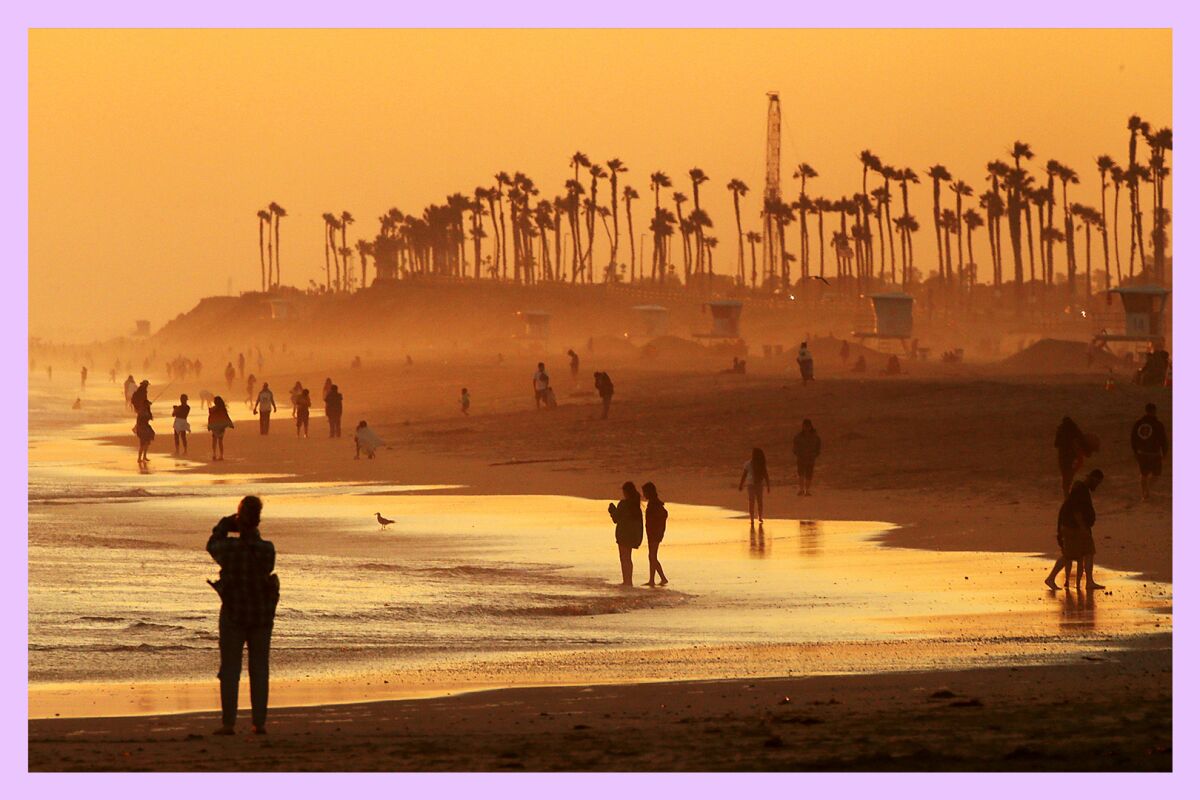
Accurate weather forecasting can save lives, especially as temperatures skew hotter.
(Luis Sinco / Los Angeles Times)
While we’re on the topic of hot, hot heat, I thought it would be nice to put things in perspective. Compared to the many folks who suffer the world’s increasing levels of heat without shady trees, air conditioning or other respite, it’s a privilege and a luxury to be able to hike in the heat for fun, or to drink a half-liter of water an hour.
On a trip out to the Wonder Valley a few years ago during the summer, I chatted with a bartender who had no cooling system in his trailer other than a fan, as well as with the owner of a Hipcamp who was trying to stay in the shade. Some of the residents in that valley live without running water or electricity, carting in precious jugs of water to brush their teeth and cook with.
In a recent article for The Times, economists Derek Lemoine, Jeff Shrader and Laura Bakkensen emphasize how important a weather forecast can be to seniors deciding whether to go to a cooling center, or hikers considering heading out into the wild.
“Our results also show that making forecasts 50% more accurate would save 2,200 lives per year across the country and would have a net value that’s nearly twice the annual budget of the National Weather Service,” the authors write.
Forecast accuracy down to the degree is the key, they explain, since the exact number itself can influence our decisions (seeing 100 degrees somehow has a different feeling from 98, no?). As we adapt, or try to adapt, to life on a warming, crowded planet, here’s to hoping we get more accurate data to help us make better decisions.
Happy — and safe — adventuring,

P.S.
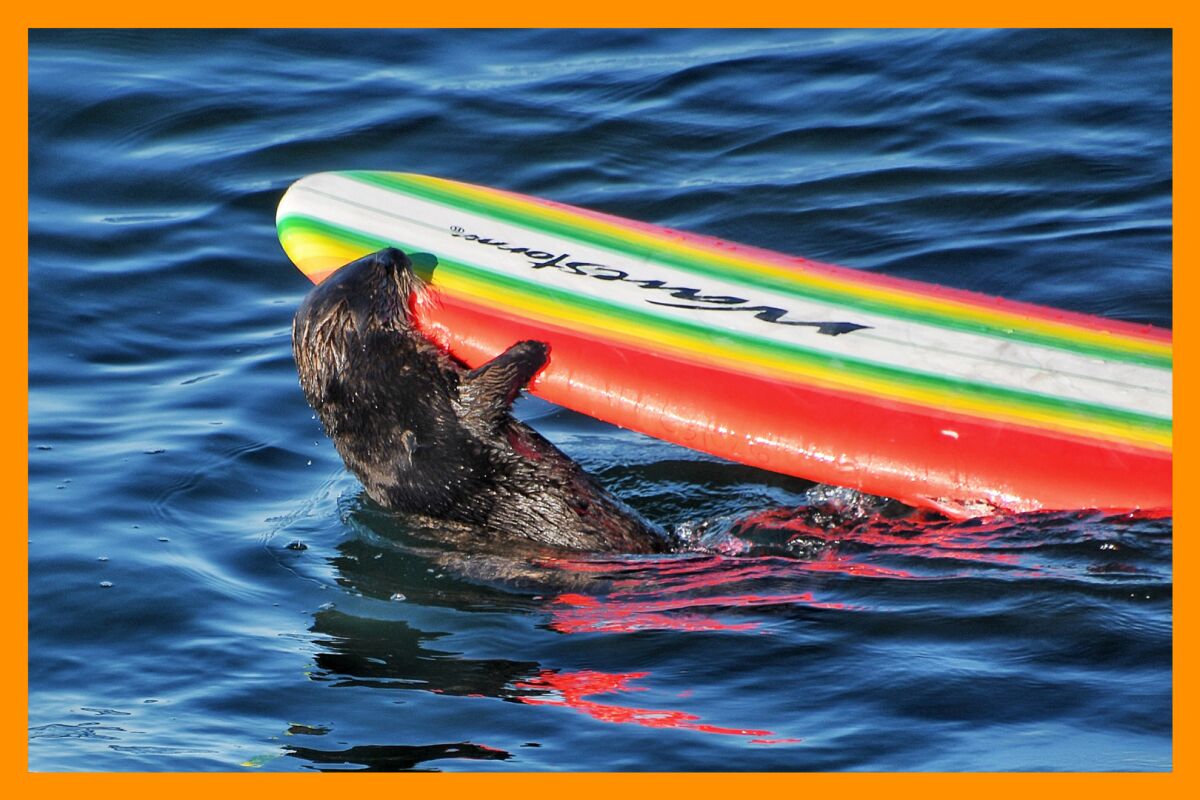
Since mid-June, Otter 841 has been stealing surfboards off Santa Cruz.
(Mark Woodward / Native Santa Cruz)
You may have read reports of the Santa Cruz otter who’s commandeering surfboards, even chomping on them. I can’t help hoping the little gal, dubbed Otter 841, has found a new hobby. Apparently, if she’s seen again, she’ll be captured, given a health check at the Monterey Bay Aquarium and rehomed, but if she bites someone, there’s a possibility she’ll be euthanized.
The most fascinating part of 841’s backstory? Five years ago, her mother exhibited similar behavior, approaching kayaks, and it was surmised she had probably been illegally fed by humans, which is, as Susanne Rust writes, “a common trigger for this kind of aggressive behavior.” After Mama Otter was trapped, researchers realized she was pregnant, and that pup became the fearless 841 we know today.
Authorities aren’t sure why 841 is acting aggressively, since they took great pains to limit human contact (see the “Darth Vader” outfit that otter handlers wear). They’re actively trying to catch her — and having no luck so far.
Little otter, are you that tired of diving and fishing? If so, may we suggest tying yourself to a kelp forest and taking a lazy ocean nap instead?
In the meantime, a sign has been put up at the beach to warn surfers that there’s an aggressive sea otter, that they enter the water at their own risk and that they should stay away from marine life.
For more insider tips on Southern California’s beaches, trails and parks, check out past editions of The Wild. And to view this newsletter in your browser, click here.
Stay connected with us on social media platform for instant update click here to join our Twitter, & Facebook
We are now on Telegram. Click here to join our channel (@TechiUpdate) and stay updated with the latest Technology headlines.
For all the latest Travel News Click Here
